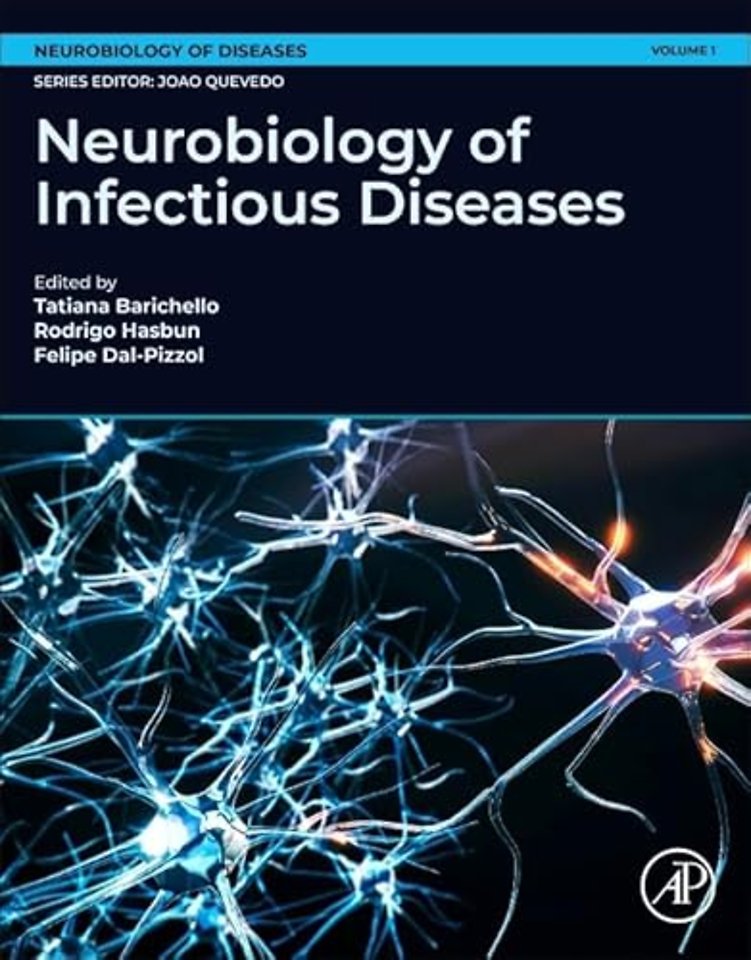<p>Part I - Foundations of Neuroinfection<br>1. Anatomical Organization of central nervous system (CNS)<br>2. The enteric nervous system’s (ENS) impact on the neurobiology of infectious diseases<br>3. The role of the microbiota-gut-brain axis on the neurobiology of infectious diseases<br>4. The role and function of specialized blood-neuronal barriers: Blood-CSF, blood-retinal, blood-spinal cord, blood-labyrinth, blood-nerve barriers, and blood-brain barrier (BBB)<br>5. Neuroimmune interactions in the neurobiology of infectious diseases<br>6. The routes and mechanisms of microbial translocation to the central nervous system<br><br>Part II - Bacterial Infections Of CNS<br>7. Brain infections, encephalitis, and meningitis: Streptococcus pneumoniae<br>8. Brain infections, encephalitis, and meningitis: Neisseria meningitidis<br>9. Brain infections, encephalitis, and meningitis: Streptococcus agalactiae<br>10. Brain infections, encephalitis, and meningitis: Mycobacterium tuberculosis<br>11. Neurosyphilis<br>12. Brain infections, encephalitis, and meningitis: Lyme disease - Lyme borreliosis<br>13. Brain infections, encephalitis, and meningitis: Brucelosis<br>14. Brain infections, encephalitis, and meningitis: Listeria monocytogenesis - Listeriosis<br>15. Sepsis-associated encephalopathy: Understanding the brain dysfunction in sepsis<br><br>Part III - Parasitic Infections Of CNS<br>16. African trypanosomiasis: Comprehending the parasite pathogenesis in the brain<br>17. Cerebral malaria: Understanding the parasite pathogenesis in the brain<br>18. Neurocysticercosis<br>19. Free-living amoebae: Pathogens and the central nervous system (CNS) disease<br>20. Pathophysiological mechanisms of Toxoplasma gondii infection in the central nervous system (CNS)<br><br>Part IV - Virus Infections Of CNS<br>21. HIV-infected human brain: Implications in HIV infection and immune response<br>22. SARS-CoV-2 and nervous system: From pathogenesis of disease to clinical manifestations<br>23. The neurobiology of herpes simplex virus infection<br>24. Zika virus: Infection of the central nervous system (CNS)<br>25. Dengue fever and its neurological complications<br>26. Japanese encephalitis<br>27. West Nile viruses: Infection of the central nervous system (CNS)<br>28. Tick-borne encephalitis (TBE)<br>29. Chikungunya virus: Infection of the central nervous system<br><br>Part V– Fungal Infections Of CNS<br>30. Brain infections, encephalitis, and meningitis: Cryptococcus sp.<br>31. Central nervous system infection due to Histoplasma capsulatum<br>32. Brain infections, encephalitis, and meningitis: Coccidioides sp.<br>33. Brain infections, encephalitis, and meningitis: Candida sp.<br><br>Part VI – Proteins and other peripheral mediators that affect the CNS<br>34. Overview of human transmissible spongiform encephalopathies<br>35. Prion-like proteins in health and disease<br>36. Autoimmune encephalitis<br>37. Encephalitis: from mechanisms to management</p>

